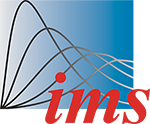Abstract
In this article, we consider diffusion approximations for a general class of stochastic recursions. Such recursions arise as models for population growth, genetics, financial securities, multiplicative time series, numerical schemes and MCMC algorithms. We make no particular probabilistic assumptions on the type of noise appearing in these recursions. Thus, our technique is well suited to recursions where the noise sequence is not a semi-martingale, even though the limiting noise may be. Our main theorem assumes a weak limit theorem on the noise process appearing in the random recursions and lifts it to diffusion approximation for the recursion itself. To achieve this, we approximate the recursion (pathwise) by the solution to a stochastic equation driven by piecewise smooth paths; this can be thought of as a pathwise version of backward error analysis for SDEs. We then identify the limit of this stochastic equation, and hence the original recursion, using tools from rough path theory. We provide several examples of diffusion approximations, both new and old, to illustrate this technique.
Citation
David Kelly. "Rough path recursions and diffusion approximations." Ann. Appl. Probab. 26 (1) 425 - 461, February 2016. https://doi.org/10.1214/15-AAP1096
Information





